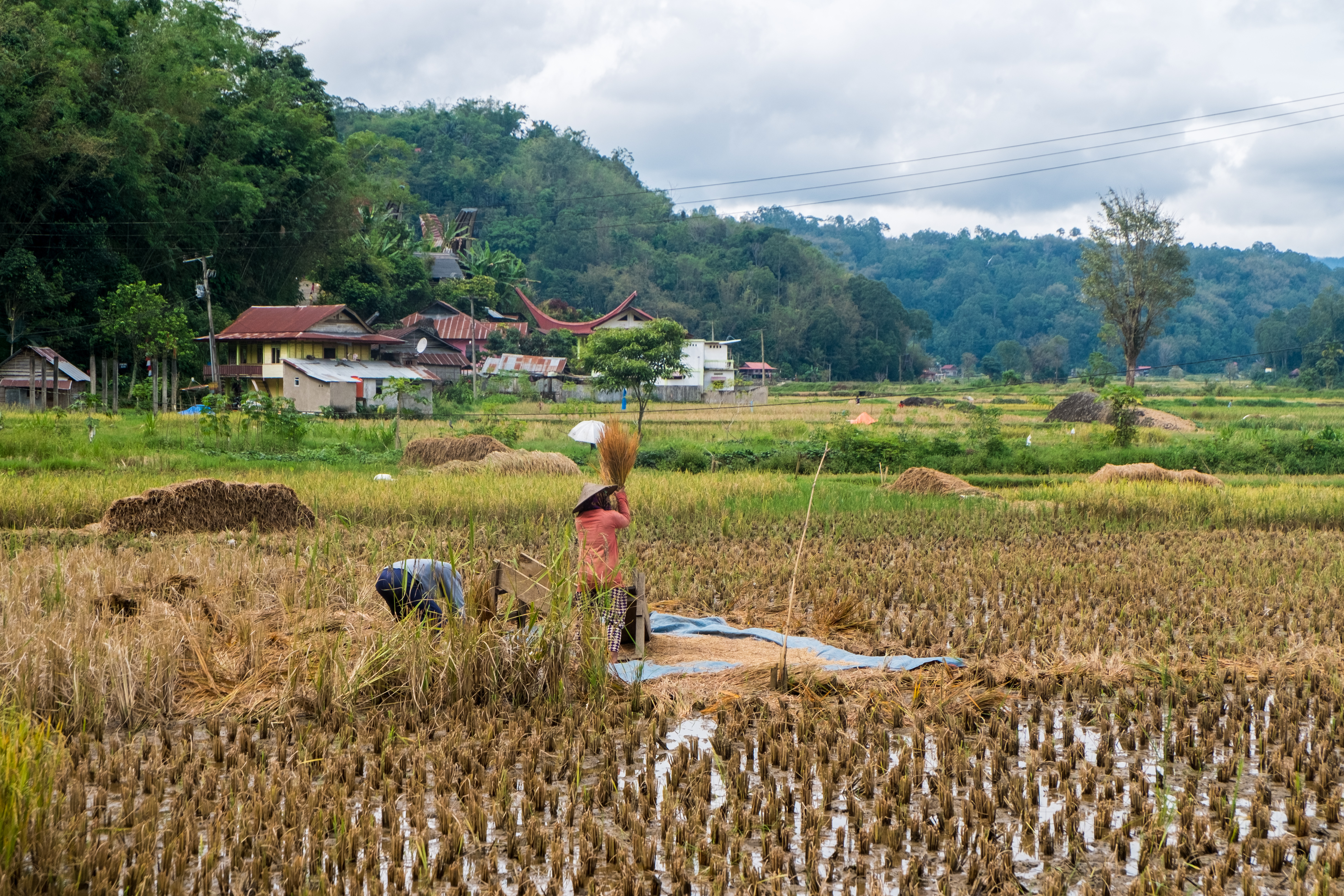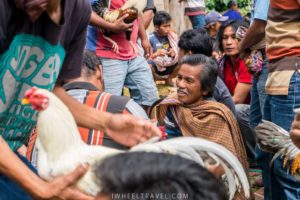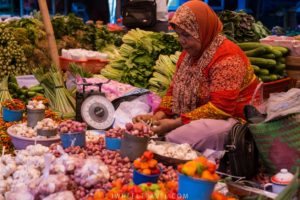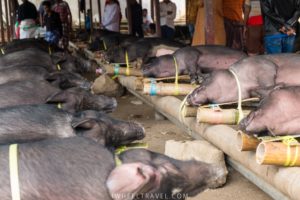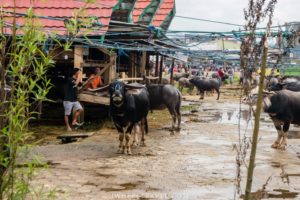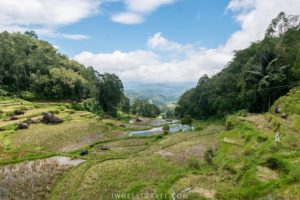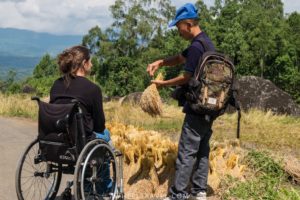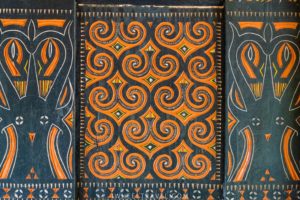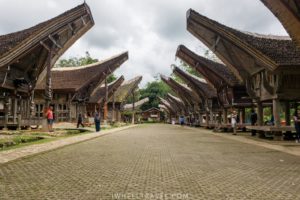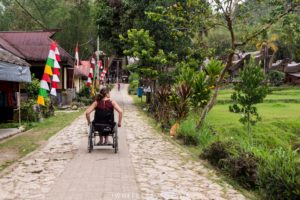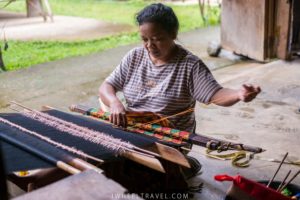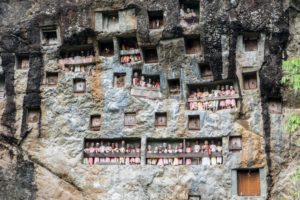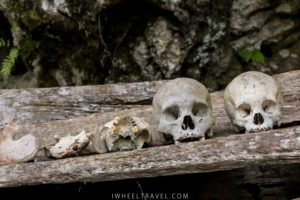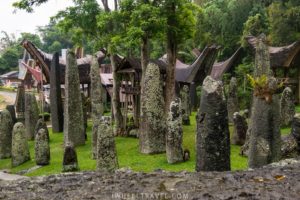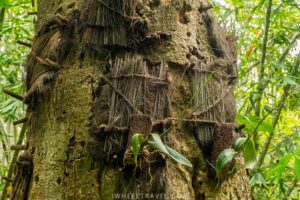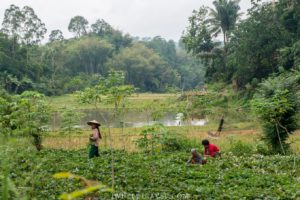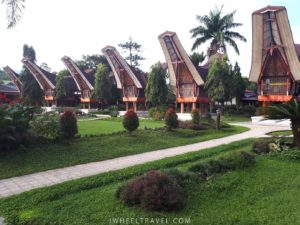Tana Toraja, journey into a land of indigenous traditions
After few days in Makassar, we drove up to Rantepao. Located in Tana Toraja region, Toraja people live here, meaning “people of the uplands”. No wonder they live up in the mysterious mountains of south Sulawesi.
Today Toranjans are mainly christians, but it was not always this way. They used to be animists, following teaching of “Aluk To Dolo” (the way of the ancestors) until the beginning of the 20th century when they almost all convert to Christianity due to Dutch missionaries coming.
Sommaire
A life in the middle of rice fields
We had barely arrived in Rantepao but we already could see the change of scene. Tens of scooters roll in every direction honking continuously. We can see a lot of dogs, goats and also buffalos on the side of the road! And for the first time during our asian trip we see a lot of churches and almost no veiled women. No doubt: Islam is not the main religion here, Christianity is. However other things don’t change: sadly they are a lot of garbages on the side of the roads. Not really surprising: in the car, on the way to Toraja, people sharing the ride with us threw away plastic packagings out the window.
Every six days, two kilometres off the centre of Rantepao takes place Pasar Bolu market. I love to meander around markets and I wasn’t disappointed! It is bursting of colours, smells and local life.
When they are not buying usual foods (rice, fishes, vegetables, fruits…), local people are negotiating buffalos, pigs and roasters prices. Adult pigs are tied to bamboos, ready to be transported, and piglets are hold in bags. Sellers get them out only to show them to potential buyers and haggle over their value.
In toraja culture buffalos symbolise power and wealth. They also have a very important role in funeral ceremonies. For these reasons they are very expensive, especially albino buffalos, and negotiations should be taken seriously.
Not far from here, it can be quite a different feeling. You just need to go few kilometres to find yourself in the middle of those famous asian paddy fields. We hire a driver to drive us up to Batutumonga, a small remote village located on the slopes of mount Sesean, a 1243 metres high mountain. From here, the view is stunning: we can see the whole valley covered by jungle and paddy fields.
On our way back, we pass by Lo’ko Mata, Lempo and Tinmbayo. I can’t get over these beautiful paddy fields! Under the sunshine, they range from green to yellow. I could have stayed a long time admiring the landscape. Buffalos bathing in paddy mud while local people work meticulously, harvesting rice or threshing it to loosen the grain, shading from the sun under their famous pointy hat.
Tongkonan, the traditional toraja house
The Toraja lifestyle might look like any other asians people lifestyle, but its indigenous culture gives it an unique identity as well as a touristic reputation. The most iconic emblem of this culture is certainly tongkonans. Those typical houses are easily recognisable because of their curved shaped roofs. Some people say it represents a boat and others think they depict buffalos horns. Speaking of buffalo horns, many of them are piled on houses frontages. Plus this animal is carved into tongkonan wood panels, so is the roaster.
Traditionally roofs were built in bamboos but they are now made mainly out of metal as it is cheaper. There are many different sizes of tongkonans. Most of the time big ones are used as habitations or meeting place whereas the small ones are rice barns.
Ke’te Kesu is the most famous village to visit and admire traditional houses. It is also the most accessible place we visited. From the parking an easy pathway leads to the tongkonans and, from there, ground is covered by some kind of cobblestones. Since they are packed it is possible to go around using a wheelchair. Ke’te Kesu is also the only site where I saw an accessible souvenirs shop. However it is impossible to use the toilets as there are stairs to reach them. Plus those are squat toilets. There is also a cemetery behind the village but it is not accessible.
Before coming to Tana Toraja I though that is was only possible to see tongkonans in some places like this village. Actually we can see them everywhere. So on our way back we stopped in another village with tongkonans where we visited a sewing workshop. Every clothes are hand-made by two women. They use home-made threads of cotton, pineapple or silk to sew. Depending on size, pattern and kind of thread it can take up to three weeks to sew a cloth.
They are sitting on the floor, hold by a sort a chair made out of wood, bamboo, buffalo horn and buffalo skin. Their work is very precise, and the result is just stunning.
The surprising toraja funeral sites
If the tongkonan houses are the symbol of Tana Toraja, its main cultural interest is the importance of death and funeral rites. Indeed, these traditions which were passed on from there animist ancestors, are very different from everything we know.
After spectacular funeral ceremonies, the most wealthy people are buried into graves, carved into the rock of a cliff. Often those graves are put high above the ground, and sometime locked to avoid being plunder. Indeed, you can find item of value in the graves, as Torajas believe you can bring some belongings with you in the afterlife. For common family, coffins are simply put up high on wooden poles.
Close to the grave, you can find Tau-Tau. Those wooden figures standing in carved balcony represent the dead ones. Like this, they can watch over the living and vice-versa. On certain burial sites, like Londa or Lo’ko Mata, graves and coffins are surrounded by skulls and bones, which have been placed here. You will also find water bottles, food and even cigarettes the living still bring to the dead.
There is many places in Tana Toraja where it is possible to see those graves. As for us, we visited Londa, Lemo, Lo’ko Mata, Suaya (the king grave) and Bori’ Kalimbuang. I enjoyed this last one, as we can see many megalithes. Access to these sites will cost you 20,000 or 30,000 IDR each, per person.
Like everywhere, babies can unfortunately die. If that case, they are put into holes dug into a special tree. Then they close it with bamboo fiber. It looks like small windows. It is not particularly pretty and it might sound strange but I found some sense of poetry in this tradition. Indeed, by putting babies in trees, Torajas think they will continue to grow at the same time as the tree, reaching the sky and heavens.
Unfortunately, not everybody can go and see these graves, as there is a long set of steps (but there is a handrail).
Like Kambira, the other burial sites are quite difficult to access for people with limited mobility. Lemo is right by a paddy field so it is really nice. We can see grave from afar, but to get close to them, you need to go down stairs, then walk a small distance, and finally few steps on a rock to get the best view. It was one of my favorite Tana Toraja site, but accessibility is not there. As well as Lemo, Londa graves can be observed from a distance, but many steps are waiting for you if you want to get closer.
Suaya, Lo’ko Mata and Bori’ Kalimbuang burial sites are easier to access. In Suaya, only few steps on an easy small path separate the parking from the graves and Tau-Tau that you will be able to see up close.
There is no step in Lo’ko Mata. The site is right by the side of the road. The path to get around is narrow and muddy, but graves are very close.
In Bori’ Kalimbuang, while there are steps, you can already see most of the site from the road, including its megaliths. So you can stay in the car if need be. However to see baby graves here, as well as the two hundreds buffalo horns house, you will need to climb many steps.
Accessibility in Rantepao
If you plan to visit Tana Toraja area, you will probably end up spending few days in the city of Rantepao. Here some information I gathered during my trip:
- Regarding accommodation, I stayed at the Misiliana hotel. Our room was spacious enough to go around in a wheelchair, even in the bathroom. There is no shower seat, nor grab bars but there is no obstacle on the floor and it is really big, as you can see in the photo gallery. Unfortunately, there is a tiny step in front of the room (see photos). Everything else in the resort is also accessible. There are paths on which it is easy to roll to get everywhere, like the restaurant for breakfast. The place is clean and the surroundings are nice, maybe a bit out of style. Also, while the decor surely looks traditional, it feels a bit off and disconnected to the real Indonesian hospitality. Price wise, it is expensive for Indonesia (700,000 IDR a night).
- I saw no accessible public toilet in Rantepao.
- Sidewalks are difficult, poorly maintained and flooded with numerous objects. Rolling directly on the road is a better option.
- Public transport, bemo and bentor, are not at all wheelchair accessible.
- To get outside the city and see the different sites we hired a private car with driver. The vehicle is not accessible, but there was enough room to store my wheelchair, and the driver was very helping and following our pace.
If you want more information about travelling in Sulawesi you can read about about the funeral ceremony we attended and Makassar.
Did you like this post? Feel free to check out my Patreon page to see how you can support the creation of new ones and be a part of iwheeltravel!
And of course, you can share, like and subscribe, to be aware of the lastest posts.

